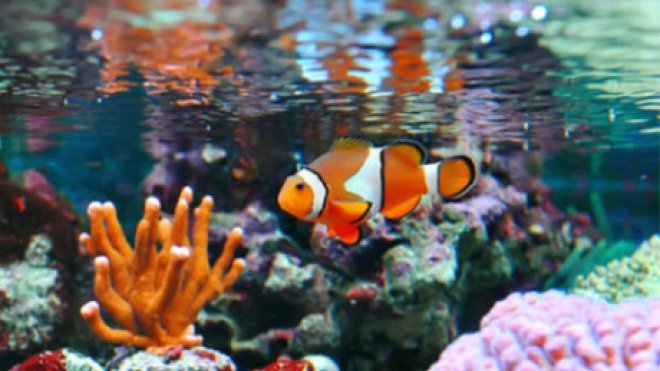RWU Faculty Member Andrew Rhyne Creates New Tool to Track Fish Species in Aquarium Trade
Interactive data tool shows volume and diversity of marine ornamental species entering the U.S.

BRISTOL, R.I. – Have you ever wondered where the tropical fish sold in pet stores come from?
Andrew L. Rhyne, assistant professor of marine biology in the Feinstein School of Arts and Sciences and research scientist at the New England Aquarium, has created a new online tool that now tracks the tropical fish imported into the U.S. including how many and from what countries.
Rhyne worked with Michael Tlusty, director of research at the New England Aquarium, in creating the interactive online data tool, Aquariumtradedata.org, to better understand the diversity and magnitude of the marine aquarium trade.
Together and with collaborations with the National Oceanic and Atmospheric Administration’s (NOAA) Coral Reef Conservation Program and the U.S. Wildlife Service, Rhyne and Tlusty gathered 2.7 million shipment records to identify the more than 2,250 marine fish species and 725 invertebrates such as live corals that have been imported into the U.S.
Most aquarium fish are harvested from their natural habitats and imported into the country by the millions annually. Yet overfishing these tropical species to meet the demand from aquarium hobbyists can have severe environmental and economic impacts. Tracking the number of fish imported to the U.S. will provide researchers with a better understanding of how the aquarium trade impacts the fish species and coral reefs.
The online data tool was launched on June 9 but Rhyne sees a great opportunity to expand the database to allow for real-time data tracking.
"While Aquariumtradedata.org provides us a look at prior years of imports, our plan is to continue this work and move into real-time monitoring of the global aquarium trade,” says Rhyne.
After registering on the site, users can examine exporting countries and the U.S. ports where the fish and invertebrates enter the country. Additional features include selecting a species or a group of species to understand from where they originate and their volume in the trade.